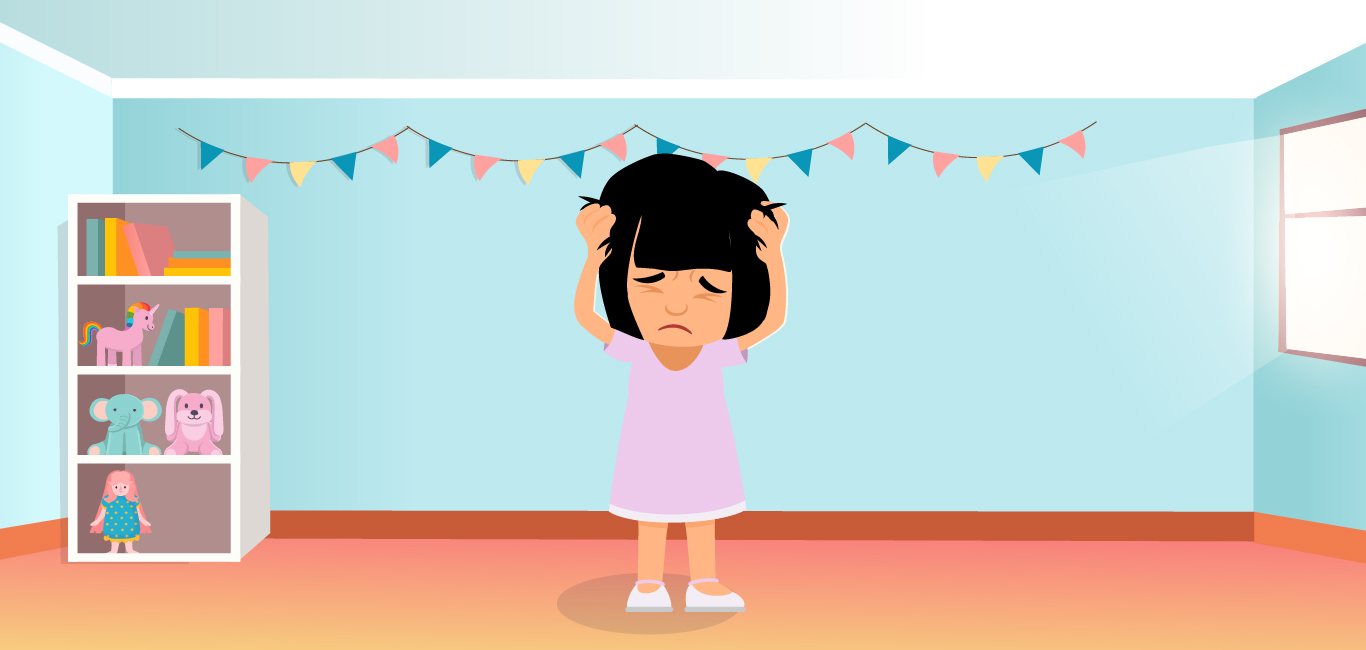
We all know how troubling a headache can be, making everything unbearable until it goes away. That nagging pain in our head radiates through our skull and makes us want to just curl up in a corner. As adults, we know how to express pain and explain headaches, but what about children?
“Some children who have headaches come to me looking very miserable and tired,” Dr Manisha Bavdekar, a paediatrician at Sanjeevani Medical Centre, Mumbai, tells Happiest Health.
Children also have headaches
Children, too, face frequent and severe headaches but do not know how to describe their pain accurately as they are still learning language and body expressions. As a result, headaches in children (paediatric headaches) are often overlooked.
“Initially, it was considered that headaches are very uncommon in children, but that is not true,” Dr Bavdekar says. According to the World Health Organization, around 1 in 20 adults have recurrent headaches lasting more than four hours. Another study found that around 60% of children globally experience significant headaches and these spells are less frequent (compared to adults) that last about two to four hours.
Dr Ishaq Abu-Arafeh, consultant at the Paediatric Neuroscience Unit, Royal Hospital for Children, Glasgow, UK adds that “the frequency and duration of headaches increase as the child grows older. By the time they are in their teens, the headaches will be like those of adults, lasting the entire day.”
The root causes of headaches
Studies show that children get headaches due to two reasons: one, when the brain regions where the pain is interpreted (pain centres) are overactive, and two, because of an injury.
The former, called primary headache, is triggered by tiredness, short-sightedness, fever, sinus infections, excessive screen exposure, improper eating habits or psychological stressors. Continuous vomiting could also cause repeated headaches.
Migraine is another type of primary headache seen in children, which presents as spells of debilitating pain on one side of the head. Sometimes, vomiting and sensitivity to light and sound accompany a migraine headache.
Studies have found that heredity plays a key role in migraines. “Migraine is a very genetic disorder. It is common to find that one, and sometimes both parents suffer from migraine,” says Dr Thomas Koch, professor of Paediatric Neurology at Medical University of South Carolina, USA. He says that hereditary-type migraines occur due to genetic mutations in the trigeminal nerve in the brainstem (a region behind the ear).
Secondary headaches are of greater concern given that they result from injury, bleeding, or varying blood pressure in the brain. “These headaches are sinister as they indicate an underlying condition, and we try to address them as quickly as possible,” adds Dr Bavdekar. Such cases call for brain scans for detailed insights, she adds.
Interpreting behaviour to diagnose headaches
“The most crucial component in diagnosing headaches in children is taking an accurate history,” says Dr Koch. He says he asks questions like:
- How long and how frequently has the child been experiencing headaches?
- Are the headaches associated with other symptoms such as fever, vomiting, diarrhoea, or dizziness?
- Is there double or blurred vision along with the headaches?
- Does the headache affect the child’s sleep?
Dr Abu-Arafeh interprets the severity of headaches in children—and categorises them as mild, moderate, or severe—through their behaviour. For example, children may be experiencing a mild headache if they can run and play; moderate headache if they cannot run or jump because of the pain but can watch a video or listen to a story; severe headache if they want to be left alone or need to lie down.
Affecting all spheres of a child’s life
Headaches are just as debilitating for children as they are for adults, says Dr Koch. As a result, children often end up missing school and social activities. “These headaches can limit their ability to participate in play, making them feel different from their siblings and peers,” he adds.
However, a child may anticipate the onset of migraine through telltale symptoms (called an aura) like mild throbbing, or blurred vision, says a spokesperson from Migraine Trust, UK, a research-driven charity that actively campaigns for children with migraines. As a result, the child gets anxious, and the pain makes it hard for them to navigate their daily activities, making them feel isolated and distressed.
A helping hand
According to experts, treating headaches and migraines in children is not a straightforward process. “Lifestyle modifications like increasing play time, ensuring good nutrition and sleep are vital to managing chronic headaches in children,” says Dr Koch. He prescribes vitamin B12 and magnesium if the child has deficiencies.
Dr Bavdekar emphasises avoiding factors that trigger a headache. For example, headaches caused by excessive screentime can be easily dealt with by reducing exposure, and a fever-induced headache can be managed with a simple painkiller.
Studies show that unaddressed stress and mental health conditions can also set off headaches in children. Counselling addresses the underlying stressors, in turn helping relieve headaches. At the same time, keeping track of the frequency of headaches could be an effective way to catch them before they get worse.
As children find it hard to understand and talk about their pain, Migraine Trust aims to eliminate this roadblock by providing the necessary vocabulary. “We give information so that they can explain their pain to their parents, teachers and doctors to seek the help they need,” the spokesperson from the trust tells Happiest Health.

















